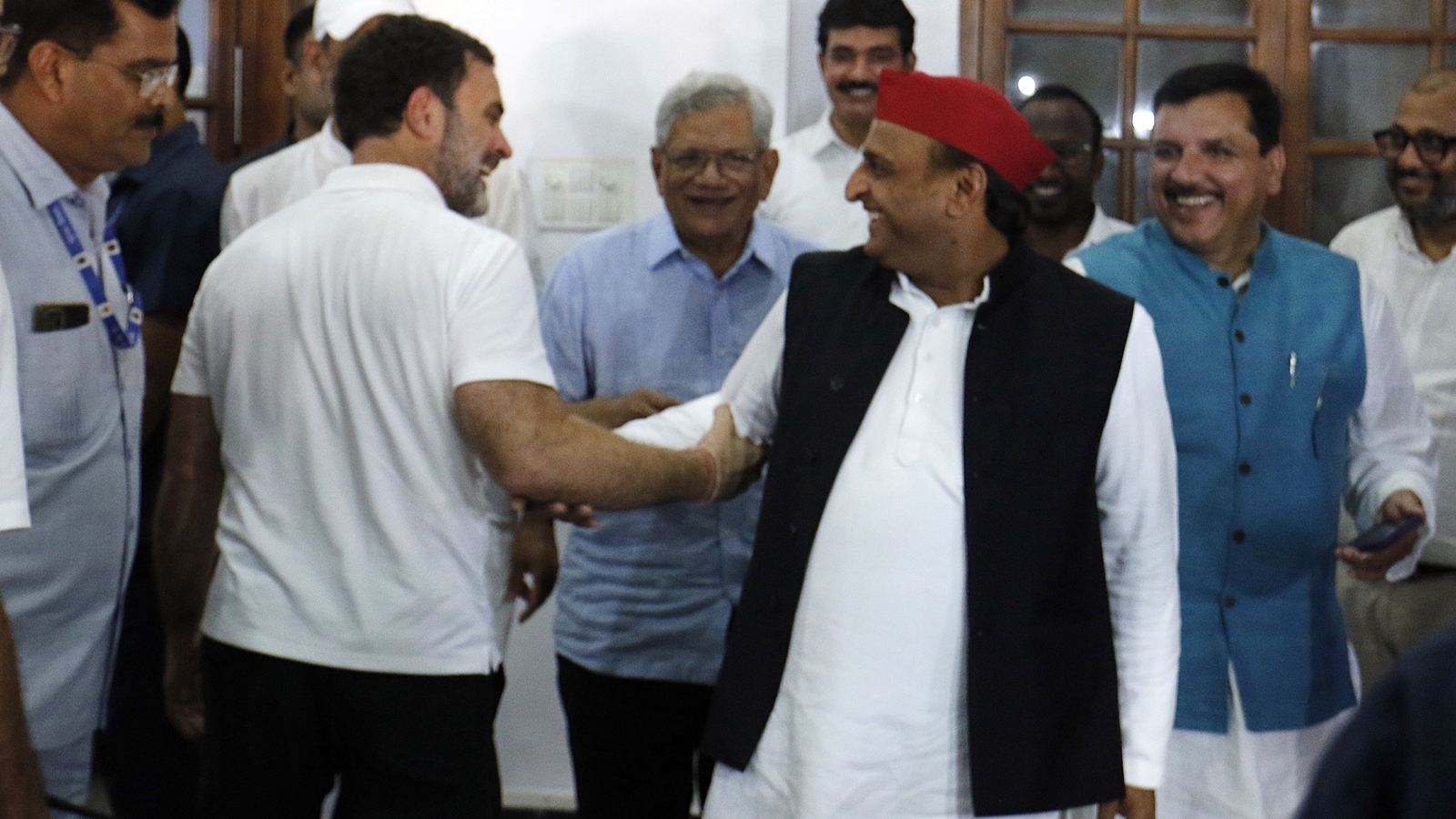It’s Day 12 after the election verdict, and what do we know so far? We know that the performance of the Narendra Modi-led BJP, a party that had poured in considerable time, effort and vast resources in propagating the overwhelming impression of its own inevitability, stopped far short of its stated target. Even to touch the halfway mark, it needs the help of NDA allies.
We know that the Congress-led Opposition, and particularly the Rahul Gandhi-led Congress, put up a strong fight on what looked very much like an uneven playing field, and despite the odds, reversed a nearly decade-long story of unchecked decline.
Beyond this, however, the verdict’s meaning is still in the making. Because it is not simply writ on the scoreboard. How the BJP and Congress read the numbers, how they put them together in a story, or not, will matter. Going ahead, on both sides of the political fence, much is going to depend on it.
Some of the difficulties of reading this mandate are common to all mandates in a complex polity that has many moving parts. But this mandate is also harder to decode because of its peculiarity — it did not throw out the incumbent while delivering a strong rebuke to it, and gave an unmistakable leg-up to the Opposition without voting it in.

So did the people withhold a majority from the Modi-BJP because they were alienated by welfare schemes that applied an immediate salve, but did not address long-term distress? Was the lack of adequate jobs the main driver of discontent? Or did apprehensions that a more powerful BJP would change the Constitution, and tamper with the system of reservation, drive a large section of the Scheduled Castes away from it, especially in politically crucial UP?
Did the BJP’s targeting of its political opponents, with all the central agencies at its command, the arrest of two chief ministers on poll-eve, have something to do with its dwindling? Did Modi’s arrogance and his colleagues’ over-reliance on the cult of Modi, and the party high command’s deaf ear to the ground in the selection of candidates, contribute to it? Did the BJP get divided between the original BJP-wallas and imports from other parties? Has the RSS registered its protest at BJP hubris by not campaigning for it this time quite as enthusiastically? Did the PM’s open minority-baiting in the second half of the long drawn out campaign consolidate the “Muslim vote” effectively, and work against him and his party?
For all its starting troubles, did the INDIA alliance finally pull together in the same direction, was it seen to be in a position to reap the building resentments against the BJP? Was the alliance’s emphasis on democracy-in-danger, missing jobs, and an incomplete social justice, persuasive? Did the demand for a caste census finally strike a chord, or did Rahul Gandhi’s two arduous yatras make him more appealing? Did the INDIA alliance put up better candidates, do more astute social engineering?
Or has the curse of the incumbent caught up with the BJP in a country where the power of universal franchise and the promise of mobilisation came at a low level of development, and where, therefore, political empowerment runs up against the limits of state capacity?
These questions are not exhaustive, of course. They are also entangled, they will need to be looked at alongside each other, not singly.
For now, there are no answers, only straws in the wind, and they are not pointing in the same direction.
In his first meeting with newly elected NDA MPs, PM Modi spoke new words, even what sounded like a different language. He mentioned the “NDA” frequently, not, as he used to, himself in the third person, “Modi”, or the “BJP”. He spoke less of the Centre, more about the “rajya” or states. He privileged consensus over majority — if “bahumat (majority)” is necessary to run a “sarkar (government)”, he said, “sarvmat (consensus)” is needed to steer the “desh” (country). In another heartening departure from past rhetoric, Modi said that the Opposition opposed the government, not the country — “rashtra ke vipaksh nahin, hamare vipaksh mein hai”.
But the new cabinet of Modi 3.0, announced subsequently, and the distribution of portfolios in it, does not acknowledge change, and instead, underlines continuity. The big ministries have not changed hands, nor have allies been given more space at the high table significantly.
Elsewhere, a Lieutenant Governor has revived an older spectre, as dismal as it is familiar, of intolerance of free speech, by sanctioning prosecution under the stringent UAPA of writer Arundhati Roy. L-G Vinai Kumar Saxena was acting on an FIR lodged in 2010 alleging that she made “provocative speeches” in New Delhi. And in a new NCERT Political Science textbook for Class 12, a rewrite of the Ayodhya dispute refers to the Babri Masjid as a “three-domed structure”, does not call it by its name. The Babri Masjid is demolished again, this time in memory.
Till next time,
Vandita


